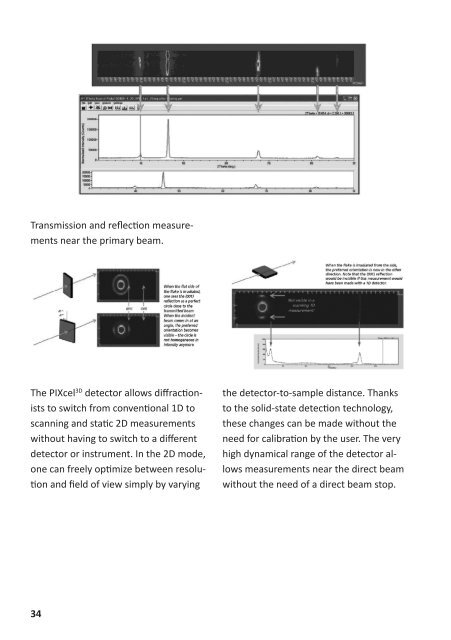4th Meeting X-ray techniques in investigations of the ... - CrysAC
4th Meeting X-ray techniques in investigations of the ... - CrysAC
4th Meeting X-ray techniques in investigations of the ... - CrysAC
You also want an ePaper? Increase the reach of your titles
YUMPU automatically turns print PDFs into web optimized ePapers that Google loves.
Transmission and reflection measurements<br />
near <strong>the</strong> primary beam.<br />
The PIXcel 3D detector allows di�ractionists<br />
to switch from conventional 1D to<br />
scann<strong>in</strong>g and static 2D measurements<br />
without hav<strong>in</strong>g to switch to a di�erent<br />
detector or <strong>in</strong>strument. In <strong>the</strong> 2D mode,<br />
one can freely optimize between resolution<br />
and field <strong>of</strong> view simply by vary<strong>in</strong>g<br />
34<br />
<strong>the</strong> detector-to-sample distance. Thanks<br />
to <strong>the</strong> solid-state detection technology,<br />
<strong>the</strong>se changes can be made without <strong>the</strong><br />
need for calibration by <strong>the</strong> user. The very<br />
high dynamical range <strong>of</strong> <strong>the</strong> detector allows<br />
measurements near <strong>the</strong> direct beam<br />
without <strong>the</strong> need <strong>of</strong> a direct beam stop.


